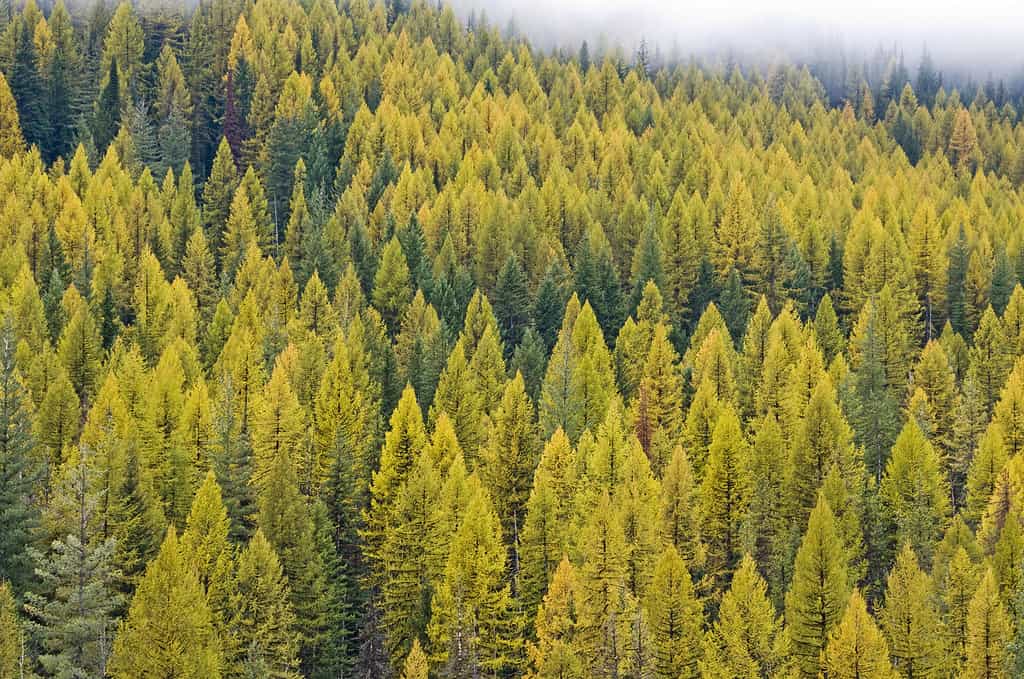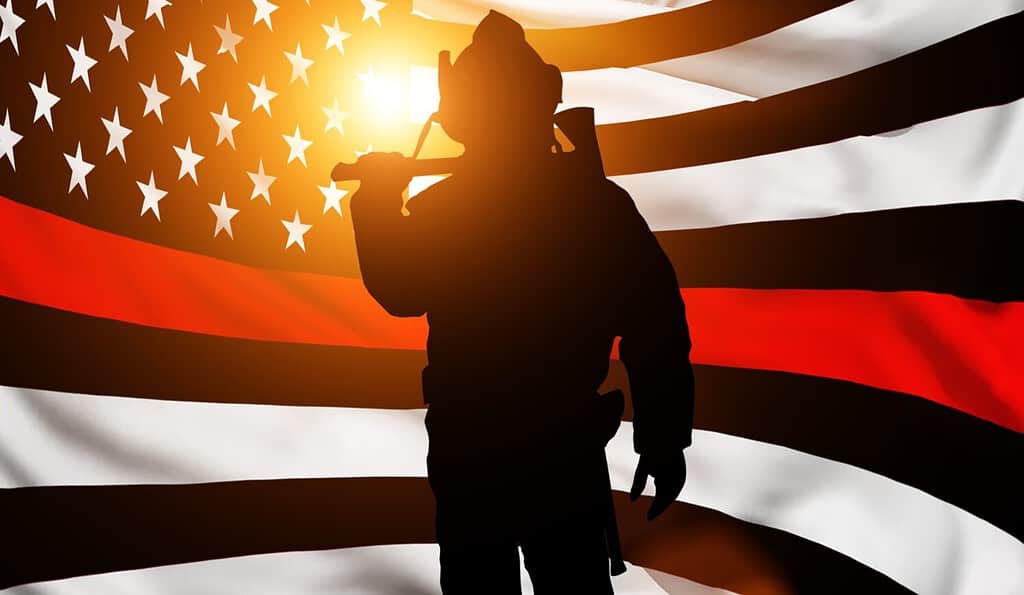Montana’s rugged landscapes, diverse ecosystems, and climatic variability create an environment conducive to wildfires. Montana experiences an annual cycle of fire activity being one of the states most affected by fires. This is influenced by weather patterns, fuel availability, and human activities.
Montana’s Wildfire Season: The Dynamic Cycle
Montana’s wildfire season typically spans from late spring to early fall. Additionally, the peak of fire activity occurs during the summer months. The convergence of warm and dry weather, low humidity levels, and wind patterns sets the stage for the ignition and rapid spread of wildfires. Lightning strikes are often generated by thunderstorms in the region. They are a significant natural ignition source for fires. However, human activities, such as campfires, discarded cigarette butts, and equipment use, also contribute to major fire outbreaks.

Forests in Montana are very prone to conflagration due to the density of fuels that they provide for burning.
©PhilAugustavo/iStock via Getty Images
Peak Risk Timing of Montana’s Wildfire Season
Montana’s fire season is inevitable each year and is driven by a convergence of environmental conditions that create combustible zones.
A Summer of Ignition: June to September
The period from June to September marks the heart of Montana’s fire season. As spring transitions into summer, the landscape undergoes a dramatic shift. Temperatures rise, humidity levels drop, and vegetation dries out. This creates the perfect conditions for fire ignition and rapid spread. The familiar refrain of “fire weather” becomes a central concern. This is because meteorological conditions play a pivotal role in shaping the risk landscape.
July and August: The Flare-Up Months
July and August are the focal points of heightened fire risk. These two months combine a bunch of factors that amplify the potential for wildfires: high temperatures, low humidity, and the influx of lightning storms. Lightning, a natural ignition source, frequently strikes the mountainous terrain. When accompanied by dry fuels and winds, it can spark new fires that have potential to grow into significant blazes.
The combination of these elements triggers a rapid acceleration in fire behavior. Fires that start small can quickly evolve into intense conflagrations. These can later get fueled by the abundance of dry vegetation and propelled by gusty winds. This interplay of natural forces transforms even minor incidents into major events, posing significant challenges to containment efforts.
Early Fall: Lingering Risks
While the peak risk months are July and August, the fire season doesn’t simply halt when summer ends. September ushers in a transitional phase which still has significant fire risk. The vestiges of summer — warm temperatures and dry conditions — continue to linger. This results in the maintainance of the potential for fires to ignite and spread. This extended risk window highlights the importance of ongoing vigilance even as summer gives way to fall.
Implications for Fire Management and Preparedness
Understanding the peak risk timing of Montana’s fire season is essential for effective fire management and preparedness efforts. Firefighting agencies must respond rapidly to any conflagrations during the critical months of July and August, anticipating lightning storms and proactively positioning resources to address new ignitions. Communities must also remain hyper-aware, implementing fire-safe practices and prepared to heed evacuation orders if necessary.

Montana is one of the states in the country that experiences a very high fire risk.
©iStock.com/Dimple Bhati
High-Risk Areas: Identifying Vulnerable Regions
Montana’s diverse topography, ecosystems, and climate together create a mosaic of landscapes that are all too familiar with the threat of wildfires. While the entire state is susceptible to fire activity, certain regions stand out as high-risk areas due to a combination of factors that make them particularly vulnerable to ignition and rapid spread.
Northern Rockies: Forested Havens Ignite
The Northern Rockies region, which includes iconic landscapes such as the Flathead National Forest and Glacier National Park, has dense forests, towering mountain ranges, and a variety of ecosystems. While these features contribute to the region’s breathtaking beauty, they also serve as potential fuel for wildfires. The prevalence of coniferous trees and dense undergrowth creates ample combustible material during the dry seasons. Therefore, this material is ready to ignite when exposed to the right conditions.
During the peak fire season, lightning storms also pose a significant risk in the Northern Rockies. Dry thunderstorms, common in the summer, can deliver lightning strikes without the accompanying rainfall. As such, this region also experiences a heightened risk of fire starts, especially in remote areas where fires might go undetected until they’ve gained momentum.
Eastern Montana: Grasslands and Wind Patterns
Concurrently, Eastern Montana presents an entirely different fire risk landscape. Eastern Montana has vast grasslands, rolling hills, and unique wind patterns. While these grasslands may not carry the same density of vegetation as forests, they are exceptionally flammable due to the prevalence of dry grasses and shrubs. The semi-arid climate of the region also contributes to the drying of these grasses during the summer months. Therefore, they transform into fuel just waiting to be ignited.
Furthermore, the consistent winds that sweep across Eastern Montana’s open plains make it even complicated to fight fires. These winds can fan flames and accelerate fire spread, challenging containment efforts and increasing the potential for fires to grow rapidly.

Fires spread very rapidly in Montana’s grasslands due to drier grasses and strong, unbroken winds.
©David Harmantas/Shutterstock.com
Interface Zones: Human Impact
High-risk areas also extend into what is known as the “interface zones.” These are the areas where human development meets wildland. As more people seek to live closer to nature, the risk of wildfires encroaching on communities also increases. Houses built in or near forests and grasslands become vulnerable, as they are exposed to the same fire-friendly conditions that burn natural landscapes.
Vigilance and Preparedness in Montana
Montana’s wildfire risk demands a proactive approach that combines constant vigilance, robust preparedness measures, and community involvement. As the state navigates the annual cycle of fire activity, residents must remain engaged, informed, and ready to respond to the dynamic and unpredictable nature of wildfires.
Education and Awareness in Montana
One of the cornerstones of wildfire preparedness is educating residents, landowners, and visitors about the inherent risks and the steps they can take to minimize them. Fire literacy includes understanding fire behavior, recognizing danger signs, and knowing how to act swiftly in the event of a fire. Local agencies, fire departments, and organizations play a crucial role in disseminating this information through public workshops, educational campaigns, and community meetings.
Firewise Communities: Defensible Spaces and Prevention
Firewise communities are central to reducing the vulnerability of homes and neighborhoods to wildfires. These are communities located in or near high-risk areas who are encouraged to create defensible spaces around structures. This involves strategically clearing vegetation around homes, creating buffer zones, and implementing landscaping practices that minimize the risk of fire spreading to homes. By fostering a collective commitment to fire prevention, residents can actively contribute to their own safety and the protection of their communities.

Firefighters face a difficult job because of the unpredictability and variability of the fire season in Montana.
©Popel Arseniy/Shutterstock.com
Emergency Plans and Evacuation Protocols
Preparedness goes beyond prevention — it also involves having emergency plans and evacuation protocols in place. Residents should be familiar with local evacuation routes, assembly points, and communication channels. Fire departments and emergency services play a crucial role in providing guidance during evacuations, ensuring that residents can leave danger zones swiftly and safely. Regular drills and community exercises help reinforce the importance of preparedness and enhance the efficiency of response efforts.
Firefighting Resources and Collaboration
Thankfully, Montana’s firefighting agencies are at the forefront of preparedness, maintaining a state of readiness throughout the fire season. These agencies strategically position firefighting crews, equipment, and aircraft in high-risk areas to respond rapidly to new fires before they get bigger. Collaboration among federal, state, and local agencies is crucial for effective resource allocation, coordination, and information sharing. The collective expertise of these agencies enhances the state’s ability to manage fires across diverse landscapes and challenging terrain.
Community Engagement and Unity
Engaged community members are more likely to adopt fire-safe practices, participate in mitigation efforts, and support emergency responders. Collaboration between community members, local government, and fire departments fosters a sense of unity that is invaluable during times of crisis. Neighborhood associations, citizen patrols, and community workshops further strengthen the collective response to wildfires.
A Shared Responsibility
Vigilance and preparedness are not isolated responsibilities — they are shared by individuals, communities, agencies, and governments alike. Montana’s wildfire threat requires a unified effort that spans education, prevention, emergency response, and recovery. By fostering a culture of preparedness, Montana can mitigate the impact of wildfires, safeguard lives and property. This ensures the state’s enduring resilience in the face of nature’s formidable challenges.
The photo featured at the top of this post is © Harry Beugelink/Shutterstock.com
Thank you for reading! Have some feedback for us? Contact the AZ Animals editorial team.







